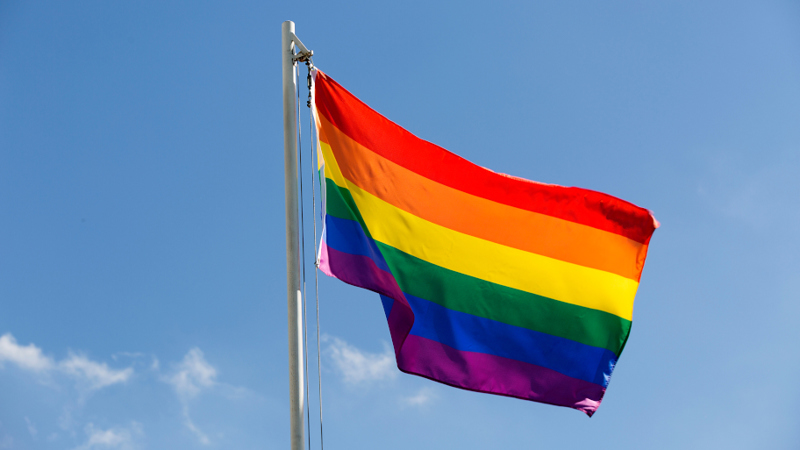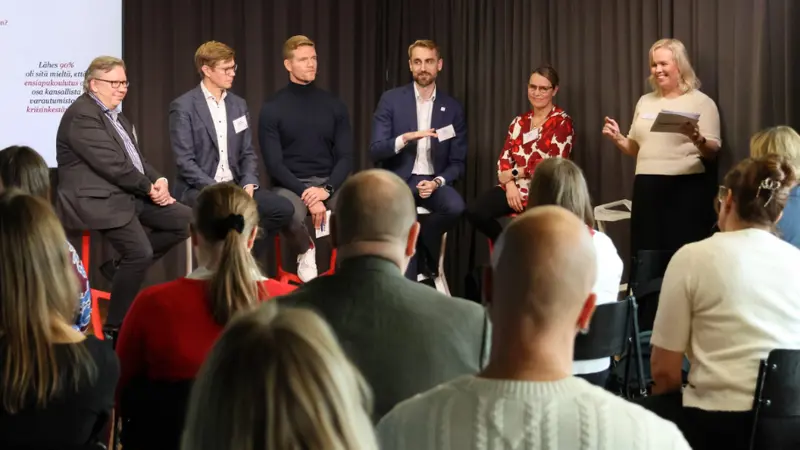Is there more in your organization to equality than a rainbow logo during Pride week?
In June, we wear the colours of the rainbow as equality is celebrated in Pride parades and events around the world. In Finland too, organisations are eager to get involved and logos are being updated on social media channels. People are tackling the problems with energy, but how should organisational culture be developed so that inclusiveness is part of the structures, not just a matter of fixing mistakes?

According to Jukka Oksanen, an occupational health psychologist at Terveystalo, equality is a mindset that should be reflected in all activities.
– Equality is not a matter of opinion or a question mark, it is something that affects us all. When talking about equality, it is important to remember that it is an important issue for most employees - regardless of age, gender, ethnicity or sexuality. For many, equality is an important factor in choosing and staying in a job. Values are not just opinions, but actions.
The starting point is the Equality Act, which came into force in 2015 and was updated just this year at the beginning of June to apply more strongly to working life. The reform strengthened the prevention of discrimination and the promotion of equality in the workplace.
– Employers were given a two-year transitional period to implement the changes mentioned in the reform, but the message is clear. If there was no discrimination of any kind in the workplace, there would have been no need for such updates, says Oksanen.
Structures remove challenges
According to Oksanen, equality starts with structures.
– When you look at things from the point of view of a person in the majority, it is difficult to see the structures that perpetuate norms that discriminate against the minority. Visible and invisible organisational structures tell us whether we belong to the (working) community in question or not. Equal structures are also likely to create a psychologically safe work community.
– The concept of a safer space is already quite familiar. It is an inclusive space, a place that allows and enables diversity. It means more than just gender-free toilets, which is of course an excellent example of the inclusiveness of the physical environment. Ongoing dialogue and the proclamation of Pride week in the workplace are examples of creating a more tolerant atmosphere. In a psychologically safe community, it is permissible to deviate from the norm, to break boundaries and to allow mistakes to be made.
Guidelines, taken from a framework to an operational level, set the norms of the organisation
No one is excluded from good behaviour, but practical codes of conduct give concrete expression to what it means in each organisation.
– It is human to make mistakes, but they must be learned from. To this end, everyone should be clear about how to deal with situations where a slip-up occurs - or to identify discriminatory speech or behaviour. We need to encourage feedback and give people the tools to give it in a constructive way," Oksanen advises.
These skills should be trained and taught in the organisation so that an equal value base becomes visible.
– In the words of Martin Luther King, "In the end we will remember, not the words of our enemies, but the silence of our friends". In psychologically safe workplaces, colleagues do not stand by passively, but act proudly in conflict situations in accordance with the values of the organisation. If you are not yet very familiar with the concept of psychological safety, you can familiarise yourself with it, for example, with the help of the Occupational Health Institute's guide "Fearless at work - psychological safety in the workplace", Oksanen advises.
Oksanen's tips for developing inclusiveness
– Organisations don't have to figure out where to start, as many have already done a lot of work to increase equality, says Oksanen.
The following tips will help organisations get started, and Oksanen also warmly recommends reading the guide "Diversity and Inclusiveness: what and why" produced by the Finnish Institute of Occupational Health.
1) Start by defining what you want to achieve. Diversity offers many benefits to organisations, so think about what they are for you and what you want to achieve by increasing inclusiveness.
2) Lead from the state of mind to concrete and measurable goals. Inclusion is not just created from the top, but the commitment of senior management is essential to achieve the goals. The 'what gets done is what gets measured' mindset equally guides the work on equality.
- In practice, you can think for example about the targets you set for recruitment and induction.
- Well-being at work surveys can be used to monitor equality, as well as the effectiveness of other well-being measures.
- Have a defined policy in your organisation to address discriminatory behaviour and produce your own internal events, for example in an accessible and common language. In addition to the gender-neutral language you speak, you also have a diverse range of images.
3) Equality is not a one-off event, it is an ongoing process. Like any other development, equality is something that needs to be worked on continuously. The traditional Plan-Do-Check-Act logic applies here too.
So let's update ourselves and our organisation. Pride week is a great opportunity to take the first step!
Read more occupationa health articles

Terveystalo's digital services have been awarded the internationally recognized ISO27001 information security certification.
Terveystalo's information security practices, processes, and risk management are in line with international best practices.

Does massage help relieve stress? – Touch restores and calms the body and mind
Stress is not always visible on the outside, but the body does show signs when the strain increases. According to Lassi Ylönen, a trained massage therapist at Terveystalo Rela, the body often communicates stress through subtle signs.

Circular economy and artificial intelligence boost performance and improve care
At the heart of sustainable healthcare, technology serves as a tool for improving both the quality of care and accountability. Terveystalo favors solutions that combine sustainability, cost-effectiveness, and medical expertise.

Psychologist: How to make Christmas a relaxed and personal celebration
For many, the anticipation of Christmas begins when cities are decked out in seasonal lights and the first chocolates, calendars, and gingerbread cookies appear on store shelves. Christmas carols ring out and the Tonttuparaati choir sings “Kiire jo on! Kiire jo on!” (Hurry up! Hurry up!). This warm and atmospheric celebration also brings other feelings to mind: how on earth can we get through all this without losing our joy and peace in the rush?

Terveystalo and Gosta Labs deepen their cooperation: the goal is to streamline work with a superior patient information system
Terveystalo is deepening its cooperation with Finnish health technology company Gosta Labs and investing €1 million in the company as a minority investor. The aim is to jointly develop artificial intelligence solutions that improve the quality of care and the efficiency of reception work as part of Terveystalo's new patient information system, Terveystalo Ella.

First aid preparedness in companies requires action and courage
First aid skills increase resilience, but a barometer survey of Finnish organizations' first aid capabilities published in October reveals that the number of trained personnel is alarmingly low.